100 Best Climate Solutions—And Why They’re Going to Work
An interview with the environmentalist and entrepreneur Paul Hawken
By Sam MoweFew are optimistic about reversing the effects of global warming. And then there’s Paul Hawken, an entrepreneur and environmentalist whose optimism runs counter to the norm. We decided it would be a good idea to with speak him about his latest venture, Project Drawdown, a book and digital platform that maps, measures, and models the 100 most substantive solutions to global warming.
Each of the 100 solutions falls under one or more categories of the three things we can do about global warming: stop the release of greenhouse gases into the atmosphere; change to renewable energy low in carbon emissions; and sequestration, bringing carbon back to the earth through photosynthesis. Of the three, sequestration is probably the least understood but most important when it comes to achieving the goal stated in the project’s name: drawdown. Climate drawdown means that we not only limit our carbon emissions, but also begin to lower greenhouse gas levels in the atmosphere.
“All of the solutions we list and model already exist, are well understood and are scaling,” Hawken says. “And virtually all of them are getting less expensive and more practical every year.” What emerges from this list of solutions is some clarity about the path forward on global warming, which, in a media landscape that tends to exacerbate fear and despair around this topic, is a real reason for feeling optimistic. The other reason is that this is the first time we have had a complete list of the top solutions to global warming since climate change came to the fore 40 years ago. Really, the first time. –Sam Mowe
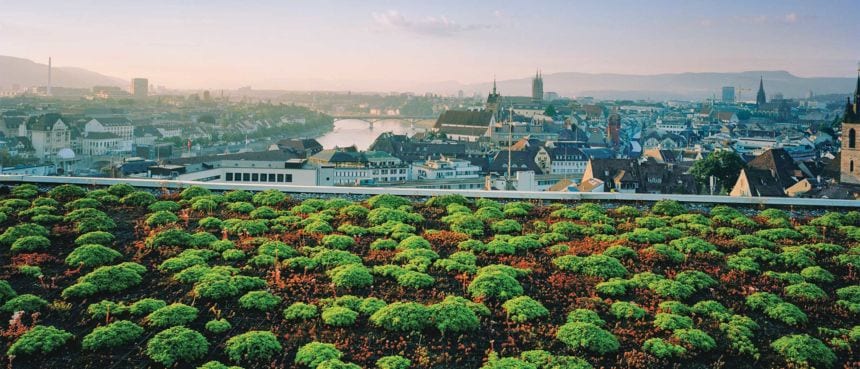
Green Roofs use soil and vegetation as living insulation. Cool roofs reflect solar energy. Both reduce building energy use for heating and/or cooling. Green roofs is solution #73 in Drawdown (ranking by 2050).
What does drawdown mean?
It means different things in different contexts, but in the context of Project Drawdown it means that point in time when greenhouse gases peak and go down on a year-to-year basis. We named the project and book Drawdown in order to name the goal. If we don’t name the goal, it’s unlikely that we’ll hit it as a civilization. When you name the goal, it opens up possibilities for solutions in terms of ideas, imagination, creativity, and inclusion.
Most of the time when we talk about climate solutions, we talk about cutting back on or eliminating our carbon emissions in order to slow down global warming and minimize its negative impacts. Why is climate drawdown the goal?
Slowing down is fine and good, but it’s not the goal. The level of carbon dioxide in the atmosphere is higher than it’s been since the Miocene period. It’s never been this high since humans existed, which means we have no idea what will happen at this level. So the idea of stabilization at 450 or 400 parts per million is not sensible.
The last time greenhouse gases were as high as 290 parts per million was the Eemian period, about 125,000 years ago, when there were alligators and hippopotami lounging in the Thames River Delta, giraffes and lions romping in Germany, and alligators in Alaska. That’s 290 ppm. We’re at 402 ppm and climbing. This is why drawdown is the goal. If you’re heading toward a cliff and you slow down, you’re still going to go over the cliff. In a sense, our goals around climate change have been like Thelma & Louise in slow motion.
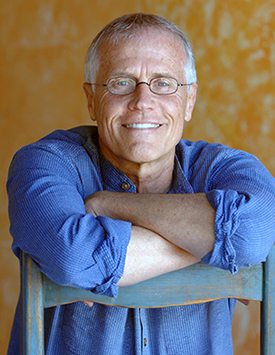
Paul Hawken
Drawdown offers 100 climate solutions—80 of which are already well established. The remaining 20 are in various stages of development. What are the next steps to achieve drawdown?
The question we asked ourselves to begin the project was: if existing climate solutions continue to scale in a rigorous but reasonable way, could we achieve drawdown in 30 years? Our first job was to identify the most substantive solutions. We went through a few hundred of them. As we started to do preliminary models, some of them dropped out and others were added. Eventually we winnowed the list down to what’s in the book and on the website.
Often when people talk about climate change and global warming, they focus on ideas or solutions that have never been done before, such as proposals to make hydrogen from coal with carbon-capture systems. Dr. James Hansen recommends building 115 nuclear power plants every year for the next 30 years, which is nearly physically impossible, not to mention that there are many sound reasons not to do it. You have people proposing solutions that are based on beliefs, not on math. We did the math. It hadn’t been done before on a full and comprehensive list of salient solutions. In doing so we discovered what the largest and most impactful existing solutions were, and we ranked them.
Can you give us a specific example of a project in Drawdown and tell us how it works?
Reducing food waste is a very important solution. The world wastes about 30% of the food that’s produced. The United States is somewhere between 40–50%. Food waste has a big carbon backpack on it. It takes a lot of energy to create that food in terms of agriculture, emissions of carbon due to tillage of the soil, pesticide and herbicide use, trucking, processing, packaging, delivery to the store, taking it home, and throwing it away.
Reducing food waste allows us to produce less food, changing the impact we have on the land. For example, in the Amazon, where forests are still being burned in order to create land for soybeans, which is for cattle, which is for beef, which is for hamburgers. Anytime you reduce the amount of food you use, you’re going to reduce impact upon the land, especially if it is meat.
What has been overlooked in the climate solution world is the capacity of agricultural, grazing, and integrated forest practices to not only reduce carbon emissions but also bring carbon back home. Drawdown can be achieved only through photosynthesis at this point, whether it is plants on land or phytoplankton at sea. In the book, we model 25 land-use solutions that sequester carbon while simultaneously increasing productivity, plant and animal health, water infiltration, and, on the other side, reducing erosion, flood damage, and loss of biodiversity.
Take silvopasture, for example, a land-use technique most people have not heard of. It involves planting trees on pasturelands. The logical conclusion is that there would be less grass and less productivity. The opposite is true. Trees act as fertilizer machines. Their deep roots bring up nutrients into the canopy, which literally rain down upon the pasture. Cattle or grazing animals thrive. And from a climate point of view, the grasses and trees are sequestering significant amounts of carbon into the soil, carbon that will remain there for hundreds if not thousands of years. Furthermore, biomass is being accumulated on top of the land in the form of trees. The only proven and known way to reverse global warming is through land-use practices such as those we detail in the book.
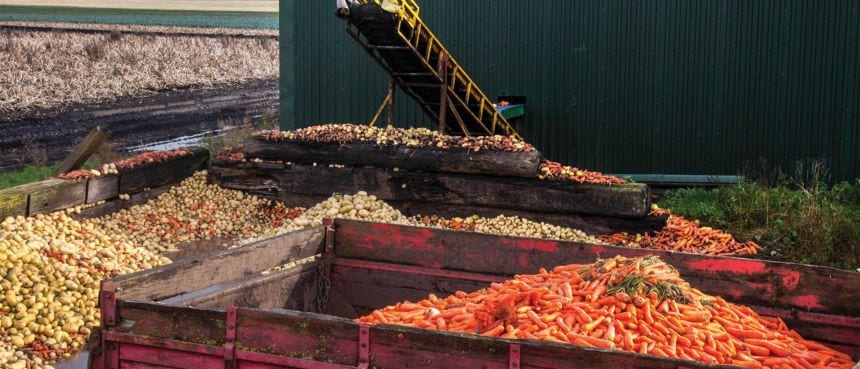
Producing uneaten food squanders resources and generates 8 percent of emissions. Interventions can reduce waste at key points, as food moves from farm to fork. Reducing food waste is solution #3 in Drawdown (ranking by 2050).
Even if we know how to reverse global warming, what’s to say that we will actually muster the collective willpower to make it happen?
It seems that only a very small percentage of the population has to change to influence a larger, apathetic population. The poster child for this point is LGBT rights. In 2010, it was an issue that people could run against in order to get elected to Congress. Two years later, those same people had their tail between their legs and wouldn’t talk about it because they knew they might lose the election. How did that shift happen? I don’t think humanity can shift without a lot of hard work, but it doesn’t take 100% or 90% or even 50% to make the change. It only takes 5% or 10% of dedicated people to change the balance of the whole.
Many of us assume that the government needs to take the lead on climate solutions through progressive legislation. In Drawdown, however, you show that solutions are already being enacted on some level and that we simply need to continue to scale them. Will we eventually need the government’s support in order to successfully reverse global warming?
We haven’t really ever had the government’s support. The U.S. government has never been a leader in this area. If the U.S. were a leader, that would be so helpful and would accelerate things. However, Congress has held us back for the past 25 years. Governments like Sweden and the State of California can definitely do amazing things for reversing global warming, but the solutions aren’t dependent upon government because they come from the private sector. The private sector is not going to turn back.
Why not?
It’s not for moral or ethical reasons. The private sector is not going to turn back for economic and societal reasons. It’s already happening with renewable energy, which, in some places, is the least-expensive electrical energy in the world. Fossil fuel and coal are dying, a cascade of economic descents. It’s just a question of how long they persist. The cost of new fossil fuel wells or mines is going up on a year-to-year basis, with the exception of fracked gas, which will persist for 10 to 12 years—then that too will climb. I suspect this will also occur in agriculture. Destroying soil, water, air, and biodiversity with fossil fuels and pesticides is not a successful long-term strategy for modern agriculture. Regenerative agriculture is much less expensive.
We modeled the economics and the overwhelming conclusion is that the cost of climate solutions is now less than the cost of climate change. That wasn’t true before. Or you can say that the profit from creating these solutions and implementing them is greater than the profit that comes from creating the problems.
This is a big change. Twenty years ago, it was the other way around. The solutions used to cost much more than the problems. Renewables cost more than nonrenewables, regenerative agriculture cost more than industrial agriculture, and so on. Regenerating our economies, our environment, and the atmosphere is going to become common sense, and what’s going to be the outlier will be business as usual.
Even though you just said that climate solutions aren’t going to be implemented for moral or ethical reasons, your work seems to have a moral or even spiritual imperative. Can you comment on this?
I can’t think of a greater moral imperative than to take care of the only home we have. People have done that culturally for as long as humankind has been around. It’s just that they never identified their home as the whole planet. There is only one boundary on earth really, and that is the atmosphere. What we do here in the U.S. impacts climate, which, in turn, impacts people all around the world. When you see and know that our destinies are inseparably stitched together, what else is there to do but honor life in its extraordinary manifestations? Being life means creating the conditions for life.
A system without feedback eventually fails. The earth is one big feedback loop. In the case of global warming, the atmosphere is giving us feedback. Understanding global warming in this way becomes a way of showing us how we have lived and thought about the world and thus how changing our thinking and minds can change the world.
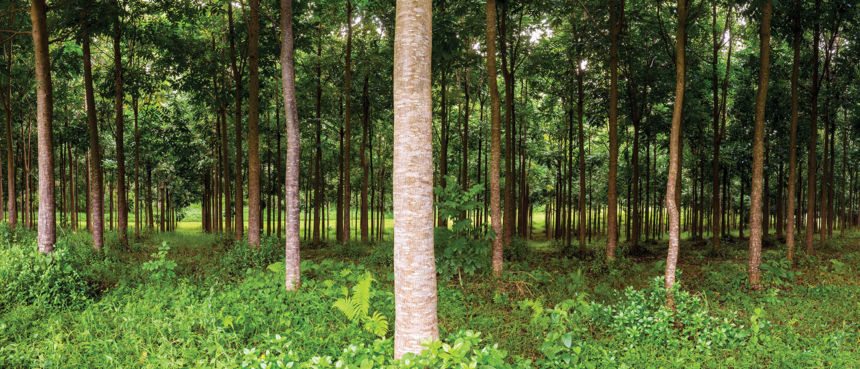
Afforestation – creating forests where there were none before – creates a carbon sink, drawing in and holding on to carbon and distributing it into the soil. Afforestation is solution #15 in Drawdown (ranking by 2050).
In your previous book, Blessed Unrest, you present a view of social change that depends on the interconnections between vast networks of people and organizations that are working on the same problems. Project Drawdown seems to embody this principle by creating a checklist of solutions that already exist in “humanity’s collective wisdom.” How does Project Drawdown tie into your broad thesis in Blessed Unrest?
In the early 1990s I was giving as many as 100 speeches or talks a year, and after every event some people from civil society organizations would come up to talk further and give me their cards. I would take them home, read the names of the organizations, and put the cards away. At that time, I lived on a houseboat in Sausalito and kept the cards in a drawer. When the drawer was full, I placed them in a shopping bag in my closet, and when the bag was full, I asked myself a question: how many organizations are there in the world working on environmental and social justice issues? I was seeing something that was difficult to see unless one traveled from place to place: an explosion of nonprofit and nongovernmental organizations that were addressing the salient issues of the times, organizations that were largely unknown. What I sensed was a movement that was becoming humanity’s immune response to political corruption, economic disease, and ecological degradation, something unlike anything we have ever seen in terms of scale, breadth, and diversity.
Blessed Unrest described qualities of human beings that are not well noted. And the parallel qualities in Drawdown are care, gumption, and ingenuity. Drawdown is saying that humanity is on the case. However, that is not what the news and trolls tell us. They pretty much dwell on the seven deadly sins and our lowest common denominators.
Reading Drawdown made me more optimistic about the future than just about anything else I’ve read about global warming. Do you think it’s more effective to give people a vision of hope rather than to simply warn against impending doom?
Well, there’s a lot to unpack in that question. The science around climate has been about future threat, which entails a component of fear. If you look at the news headlines, they tend to overdo the fear, even though it’s based on good science. The scientists themselves are a little bit more circumspect, but not the press. So the information about climate change that most people get is centered on fear, threat, doom and gloom. The implication of the news is you’re causing global warming—it’s your car, your house, the way you eat, the way you travel, and what you buy. So people feel guilt or shame inside. They may not even acknowledge it, but it’s often there. When you mix fear and doom with guilt and shame, you get apathy. That’s Psych 101.
The science on global warming is outstanding. It’s the communication about it that we need to work on. The communication has focused on stopping, reducing, and mitigating climate change—concepts that leave people in a kind of intellectual, conceptual, and existential pothole. People who are literate in the science may feel disempowered or think that what they do to address the issue is meaningless in terms of making an impact. That is because we are focusing on what “you” can do. We can instead focus on what “we” can and are doing.
If you Google the top ten solutions to climate change—which I recommend you do—you get phrases like “forego fossil fuel,” “upgrade the infrastructure,” “move closer to work,” “consume less,” “be efficient,” “eat smart,” and “stop cutting down trees.” These aren’t solutions; these are proverbs. You can’t argue with proverbs. But they don’t necessarily give you hope.
On the other hand, our approach was not about engendering hope. From my point of view—which, I suppose, is informed by Buddhism—hope is the pretty mask of fear. You can’t have hope without fear, whether you’re aware of it or it’s subconscious. What we need to be is fearless, not hopeful, because to be hopeful means that our actions are based on fear. No action based on fear—except running away from a bear—has a good outcome. In fact, you shouldn’t run away from a black bear; you should stand tall.
In Drawdown, we strive to hold up a mirror to the world to show that, in fact, humanity is on the case. Yes, the odds are long—but we’ll take those odds. Drawdown names the goal, enlists and analyzes the solutions, and acts. For all of us, it really is one, two, three. I don’t think we’ve had that clarity before. Personally, I wanted clarity. I wanted to know: Could we do it? Who knew? I believe the models and data in Drawdown clearly show that we can.
This interview appears in the current issue of Tricycle: The Buddhist Review.
Top image: Coastal Wetlands. The world’s salt marches, mangroves, and sea grasses provide vital habitat, flood protection, and water filtration, and sequester huge amounts of carbon in plants and soil.
Images courtesy of Project Drawdown
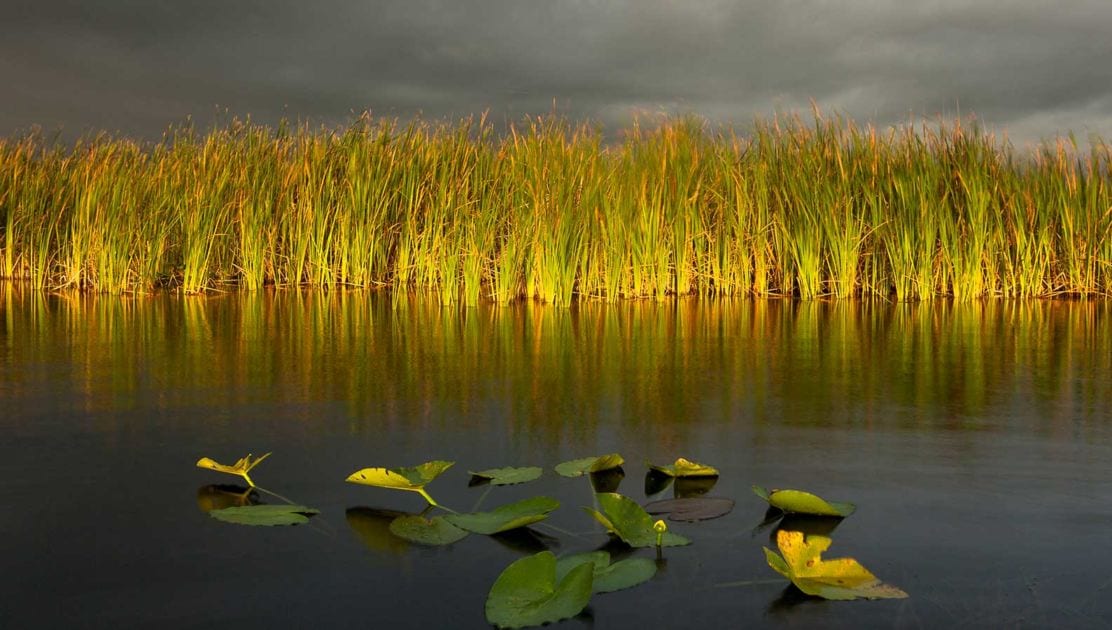
Yes, I agree that Humanity is on the case and all these solutions if they’re applied would solve climate change BUT the psychology of Humans dictates that they will not act, especially when they are secluded in their smug world of material comforts and convenience, until they are compelled to do so.
Kiribati is acting, refugees from Syria’s violence, largely initiated by climate change, are acting and there are many more examples of people who are compelled to act.
Yes, Humanity is on the case. From what you indicate in this interview about Blessed Unrest [ I have not read it to date ] there are huge numbers of social groups discussing, planning and acting to do something about what they feel is wrong in this world and no doubt climate change is a prominent issue but the sum total of what they’re doing practically is nowhere near reversing the steep rise in greenhouse gas emissions and consequent climate change. The problem is they are not acting fast enough.
And there is more bad news; Humanity is also on the other case, the one where they accumulate more material comforts and wealth. The majority world [all those billions of people who are poor] are working their butts off for at least a taste of the affluence that the people you lecture to live in. They are motivated by fear that they will not be like us before the affluent slam the door in their faces.
Worst of all are those, already wealthy and because of that powerful, who are on the case for more wealth and more power at the expense of the planet. They are winning and my prediction is that they will carry on winning as the privileged elite, as is the way of human history right back to the stone age. They are winning.
Don’t forget the silent populist masses, whose everyday routine world never changes, who are in the millions of social groups concerned with fashion, home renovations, ever more exotic foods or faster cars, do not feel the effects of climate change or, if they are even interested, are struck dumb by the immensity of the problem and go into denial. In my world they outnumber climate activists by far.
I have long been an environmental activist, just like you, so know about the many groups trying to do something about climate change, I have many friends among them. We’re not paralyzed by fear but to be sure we feel guilty, because if we did not we would not need to act. We are angry and frustrated about those who are winning on the case for more wealth, exclusivism, elitism, growth as usual… or the silent masses who do not feel guilty, are in denial or are just taking the last opportunity to stock up before climate disaster.
As an activist, I know the need to have something to aim at. You supply that in this book. Thank you.
Hans Sipsma
We have to stop thinking that climate change and degradation are something akin to divine retibution for environmental profligacy, and see it as an incentive to re-invent human enterprise in a fundamentally more benign manner the fruits of which will also address issues of economic injustice and social inequity.
Without wishing to trespass on anyone’s religious views, the revisioning of the planet as a single homeland as described in the Baha’i writings at once sweeps aside any lingering loyalties towards the prejudices, divisions and othernesses that have beguiled and distracted us across our social evolution, enabling us to face the challenges and opportunities that confront the entire planet. We will not be able to do so without this fundamental shift in perspective.
The practical solutions outlined are excellent, but require a new moral loyalty towards the planet and a willingness to sacrifice and serve if they are to become sustainable and definitive to social policy.
For this reason I will continue to advance an understanding of our fundamental unity as expressed through the Baha’i writings, inviting consideration of the spiritual disciplines it offers to help build a new morality, while structuring my professional life to help facilitate such solutions and promote meaningful conversation with “Elevate” – a continuously evolving resource of questions to help facilitate skill and confidence in social discourse while exploring issues of social concern such as the environment.
While Drawdown is a remarkably important work and Paul is a visionary in the best sense I am afraid that he sugarcoats the reality of climate change.
My understanding of the physical and behavioral science is that we don’t have anywhere near 30 years to start drawdown. Both the physical world and civilizational stability will be seriously degraded by then.
Urgency and realism is what is missing from the Drawdown ‘plan’.
Inspiring story there. What occurred after? Thanks!
First of all I would like to say wonderful blog! I had a quick
question that I’d like to ask if you do not
mind. I was interested to find out how you center yourself and clear your mind prior to
writing. I have had difficulty clearing my thoughts in getting my thoughts
out. I do take pleasure in writing however it just seems like the first 10 to 15 minutes are generally lost just trying to figure out how to begin.
Any suggestions or tips? Many thanks!
It’s nearly impossible to find educated people
in this particular topic, however, you seem like you know what
you’re talking about! Thanks
An impressive share! I have just forwarded this onto a co-worker who had been conducting a little research on this.
And he in fact bought me lunch due to the fact that I discovered it for him…
lol. So allow me to reword this…. Thanks for the meal!!
But yeah, thanks for spending time to talk about this matter here on your web site.
I am glad to be a visitor of this utter site, thanks for this rare information!
It’s amazing in support of me to have a website, which is good designed for my knowledge.
thanks admin
I?m amazed, I must say. Seldom do I come across a blog that?s both educative and entertaining, and let me tell
you, you have hit the nail on the head. The issue is an issue that not enough folks
are speaking intelligently about. I am very happy I found this during my hunt for
something concerning this.
Wow! Thank you! I permanently needed to write on my site something
like that. Can I take a fragment of your post to my blog?
You may quote our website as long as you cite us and denote the original posting with a link to our page. Thank you for asking.
Great blog! Do you have any helpful hints for aspiring writers?
I’m planning to start my own website soon but I’m a little
lost on everything. Would you suggest starting with a free platform like WordPress
or go for a paid option? There are so many options out there that I’m completely overwhelmed ..
Any tips? Appreciate it!
Everything is very open with a really clear explanation of the issues.
It was truly informative. Your site is useful.
Thanks for sharing!